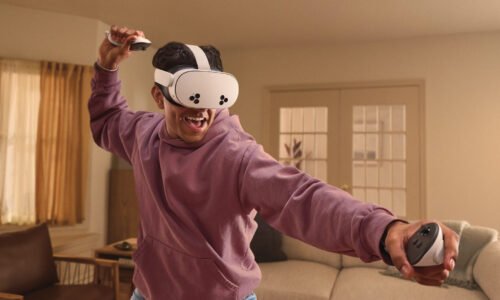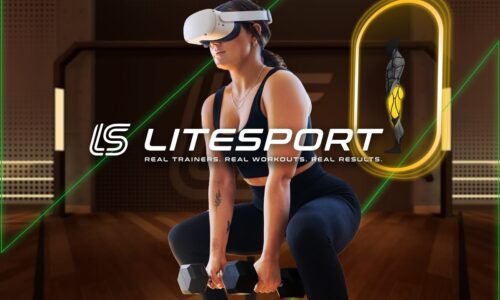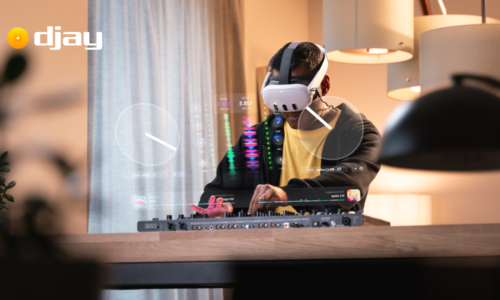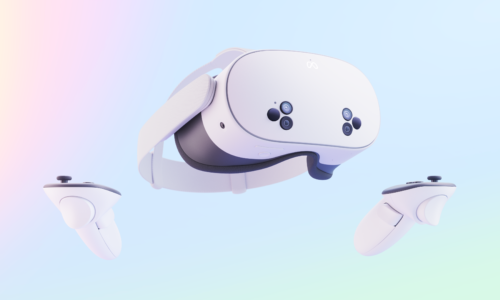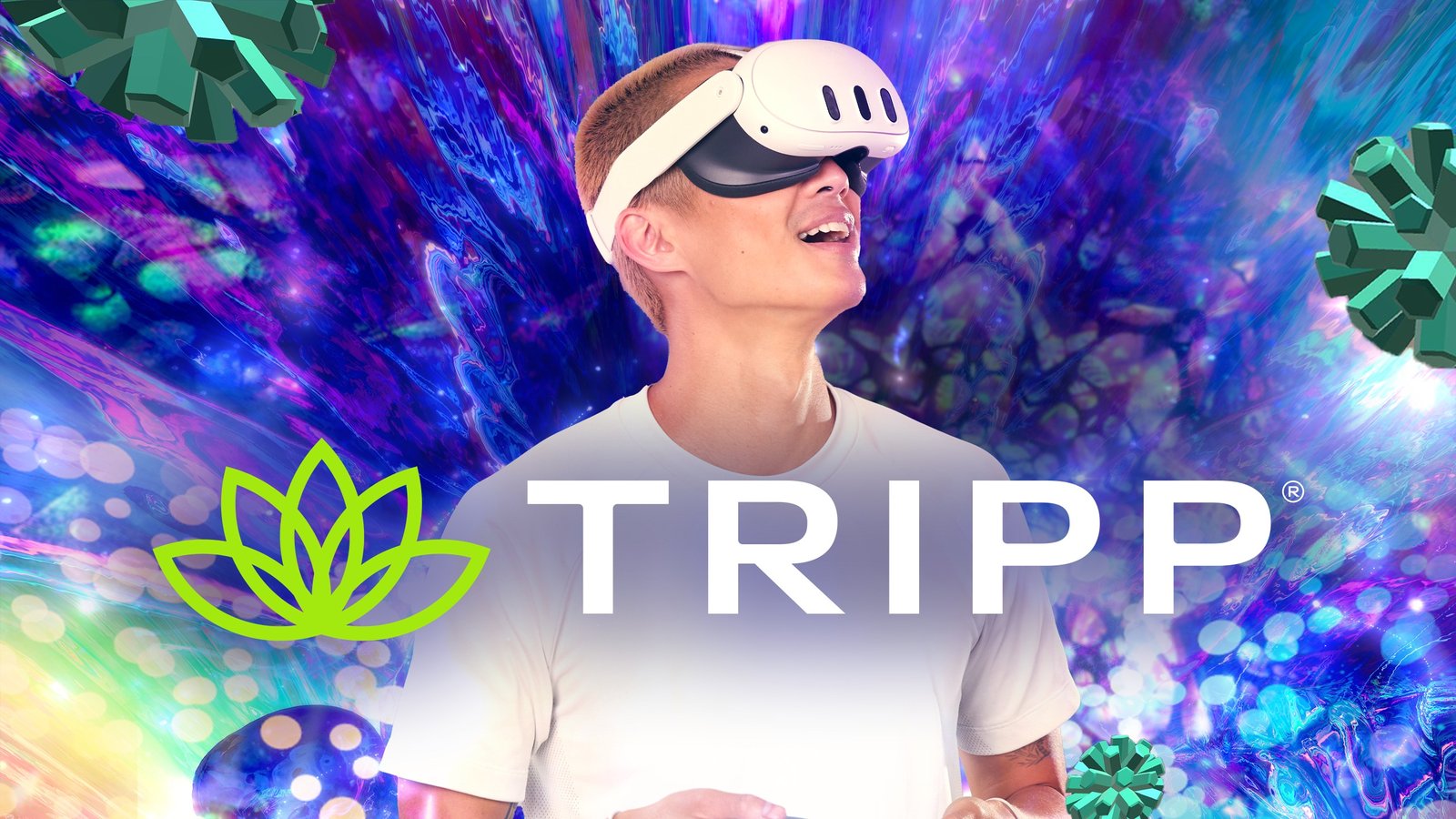
Jumpstart January: Talking with ‘TRIPP’ Founder & CEO Nanea Reeves About VR Mindfulness
- By Smart Glasses Meta Quest
- 0 Comments
- Posted on
“I think that we all understand that taking care of our sleep and our physical fitness proactively can help us stay healthier longer,” says Nanea Reeves, Founder & CEO of VR meditation app TRIPP, “But there’s also a mental and emotional version of that.”
It’s true! While we’ve shown off a bunch of Meta Quest’s best fitness apps during the month of January, it’s just as important to take care of your inner self. TRIPP can help you do that, with an immersive approach to mindfulness that makes it possible for anyone, regardless of experience level, to improve their daily meditation practice and get the support they need. An early VR pioneer, TRIPP has added myriad features over the years and become a robust resource for people around the world.
For this entry in our wellness series, we sat down with Reeves to discuss TRIPP’s early development journey, new features like the Kokua AI agent, and the importance of mindfulness in everyone’s day-to-day lives.
How did the development of TRIPP come about?
Nanea Reeves: I actually had the good fortune of being a very early investor in Oculus, and when I would go down to Oculus’s original Orange County office and try the experiences, a lot of them were designed to create fear and terror, because it was easy to scare people with the early VR demos.
I kept thinking, if you could create fear that easily, what else could you make someone feel? That was really the idea. I benefited in my own life from playing video games, from a mental health perspective. I think there’s a lot of data actually that can support some of the positive aspects of playing video games. During really dark times in my life, I found a lot of solace in playing video games.
I also have a very evolved meditation practice that was gifted to me at age 15 when I was in a full-blown mental health crisis. This therapist taught me how to meditate as a way to learn how to self-regulate. I have seen throughout my life that having a deep mindfulness practice is actually a superpower, especially being a woman working in tech and working in the games industry. The ability to manage my reactions to things and insert that pause before the next reaction changed my life.
And so, when I started to really think about, “What’s my idea that I want to bring forth in the world?”, it was something about that magic of moving from one reality to another that VR specifically gives you, and then using that to support mental health. On a personal level, I had lost my husband to cancer, and it was very sudden, so I was also fazed after emerging through grief. How do I build my life? How do I rebuild it from the ground up, alone, going forward?
It was time to bring my own ideas forth and grow them and get them supported. I’d lost everything, so I really didn’t have anything to lose at that point.
When we launched TRIPP, people were skeptical. Were gamers going to like it? Especially men, because there is this unconscious bias that only women want to support their emotional and mental well-being. But that’s not true. TRIPP’s audience is 59% male. I think that community has really been ignored by the mental wellness space.
This was also early in VR, when people were surprised that others were losing weight playing Beat Saber and Pistol Whip. People were surprised by the emergence of fitness and health and wellness. They definitely were surprised at how popular TRIPP was becoming.
I think the beauty of Meta Quest, for us, is that we have a loud, active, passionate community. It helped make our company, and that’s why I really feel like TRIPP was co-created by our community. It was an organic and iterative process, and the feedback from the people using our app was so important.

How do you see TRIPP fitting into the VR wellness ecosystem?
NR: I think that we all understand that taking care of our sleep and our physical fitness proactively can help us stay healthier longer—but there’s also a mental and emotional version of that.
Right now, especially in our culture, we tend to respond to our emotional wellbeing when we’re already in crisis mode, but how can TRIPP be there to help you think proactively about maintaining your emotional and mental well-being and health? That means building resilience, learning how to focus your attention in a way that is supportive of your own personal goals, your own personal happiness, your own productivity.
It’s not about meditation, ultimately. It’s not about getting calm and focused. That’s a beginning state. The most important thing is helping you learn self-awareness and how to self-regulate your reactions. Not every moment is going to be peaceful and happy in life, and if you can build those emotional and mental muscles the same way you build your physical muscles—to be able to pause and then analyze what’s happening inside of you in this moment—that’s going to make you most successful, right?
We really want to use technology in positive ways and help people build that resilience. The headset is more of a retreat—a beautiful safe space to connect and hold that space within yourself—but really the ultimate goal is how do you take it out into the world?

What do you find most compelling or interesting about home meditation and wellness—either broadly, or in regards to VR specifically?
NR: I’ve meditated a long time, but I think even getting started has its own challenges. Apps like Headspace and Calm have done a wonderful job of informing people about meditation and lowering the barrier to entry, making it easy and accessible. They’ve done a great service to the world in reducing the stigma around mindfulness.
Still, a lot of people don’t understand it. In the West, we tend to approach it more like a “chill pill.” We’re all looking for quick fixes. A lot of people approach a mindfulness practice from the sense of “I need to be more calm, I need to be more focused.” And that will happen—if you stick with meditation for eight weeks and do something like 27 minutes a day, you can actually increase your gray matter. You can change your neural pathways. There’s lots of science on that.
There are all kinds of reasons why we should do something, though. I’m working right now on lowering my cholesterol, and I know what I need to do. Do I do it all the time? Not really.
We know mindfulness is good for us, but when most people start, they find that learning how to quiet the mind can actually be frustrating. Thinking that they’re supposed to “not think” is really challenging, right?
The benefit of VR is that the whole goal of meditation is to bring your awareness present. Most of us are stuck on regretting something that happened 20 minutes ago or worrying about something that might happen 20 minutes or 20 years from now, right? We’re very rarely anchored in the current moment. The simple practice of being really, really connected to the breath, of learning how to look at your thought stream, is the initial goal—as opposed to trying to “not think,” which is actually not possible. When you look at your thought stream, you elevate above thoughts and feelings, which is in itself a whole process.
What happens though—if you can even get that far—people, when they start looking at their thoughts, start to realize how negative they are with their inner voice, right? It’s even more upsetting when people realize they’re negative towards themselves even more than others, and that can be a point where a lot of people give up meditating, because it’s difficult to go through that process.
But if you can navigate that, there’s so much gold on the other side—because when you become self-aware and can insert that pause and start to shift the way you think, if you can produce a thought that is negative, you’re also capable of producing a more positive version. That’s the shift, right? That’s where I saw my whole life change.
With VR, it is so easy to capture someone’s awareness in the present moment. It’s an immediate thing. It took me at least 10 years to get to the point where I could be present even for just a few moments, right? But you put on a headset and you’re in an environment like TRIPP, and you’re going, “Oh, wow!” You’re presently aware.
We used to say early on, “Stimulate, don’t simulate.” Can we stimulate the neurological response? Can we stimulate peace? Can we stimulate connection to your breath by showing you your breath? You can do that in VR.
You continue to work on TRIPP, right? What are some of the latest features?
NR: Yeah, the thing we’re most excited about is the launch of Kōkua, our AI agent, which is live on Meta Quest now. I’m Hawaiian, and “Kōkua” is the Hawaiian word for “support” or “help.”
We’re really excited about it. You go into TRIPP, and Kokua is this light that appears and asks you how you feel. You could say, for instance, “I’m stressed out about this Meta interview that I have in 10 minutes,” and it’ll guide you through a real-time personalized meditation. It authors the content specifically to you.
Kōkua was co-created with TRIPP’s users. They’re shared over 22 million feelings in TRIPP over the years, and that’s the data that we used to build Kōkua, and it’s been really interesting to see how people interact with it.
The other thing we did was we upgraded every single asset in our app. All of our worldscapes have been updated to a much higher resolution.

What do you think the next era of TRIPP will look like?
NR: One of the features we have in our mobile app, and we launched with it in December of 2019, is you can upload your own images into VR. And we see that the users who do that stay much more engaged. It creates a much deeper experience.
That really let us know that personalization is the next form of innovation in wellness. A lot of wellness apps, you get a body of experts who say “This is how you meditate,” and it’s all kind-of top down, but the beauty of what we’re starting to do now is that it’s co-created with our users.
Kōkua is learning how to support other people through the act of supporting you. When you interact with Kōkua as an individual, you’re also helping to teach it how to support other people, and this is one of the most exciting things about what we’re doing now—using technology in an entirely new way, not to replace humans, but to create experiences and opportunities you couldn’t do in real life.
So instead of sticking you on a beach by a waterfall and having a Celtic voice tell you to inhale and exhale, right—which is what everybody thinks VR meditation will be, and we have those experiences, but that’s not why people come to TRIPP. They come to TRIPP because we can show you your breath like stardust in an immersive environment that’s designed to trigger awe and wonder, or reward you with augmented reality gifts, so you can transform your physical reality as a result of your self-care. You’re going to see us do more with the community around that.

What are you most proud of when it comes to TRIPP and its impact on people?
NR: I think the thing that really keeps us very motivated as a team is how many people tell us that we’ve been able to support them during a really dark time. When you see “life-changing, life-changing, life-changing,” over and over again—this is something we don’t take lightly at all. We were just talking this morning about how some of the things in TRIPP could have a lot less friction. People are coming to us to relax and calm down, so they’re even more upset if something gets in the way of that.
And so we get held to a different standard, but I think in many ways that has evolved our company and our product in a way that really connects with people.
TRIPP is available now on the Meta Horizon Store.


